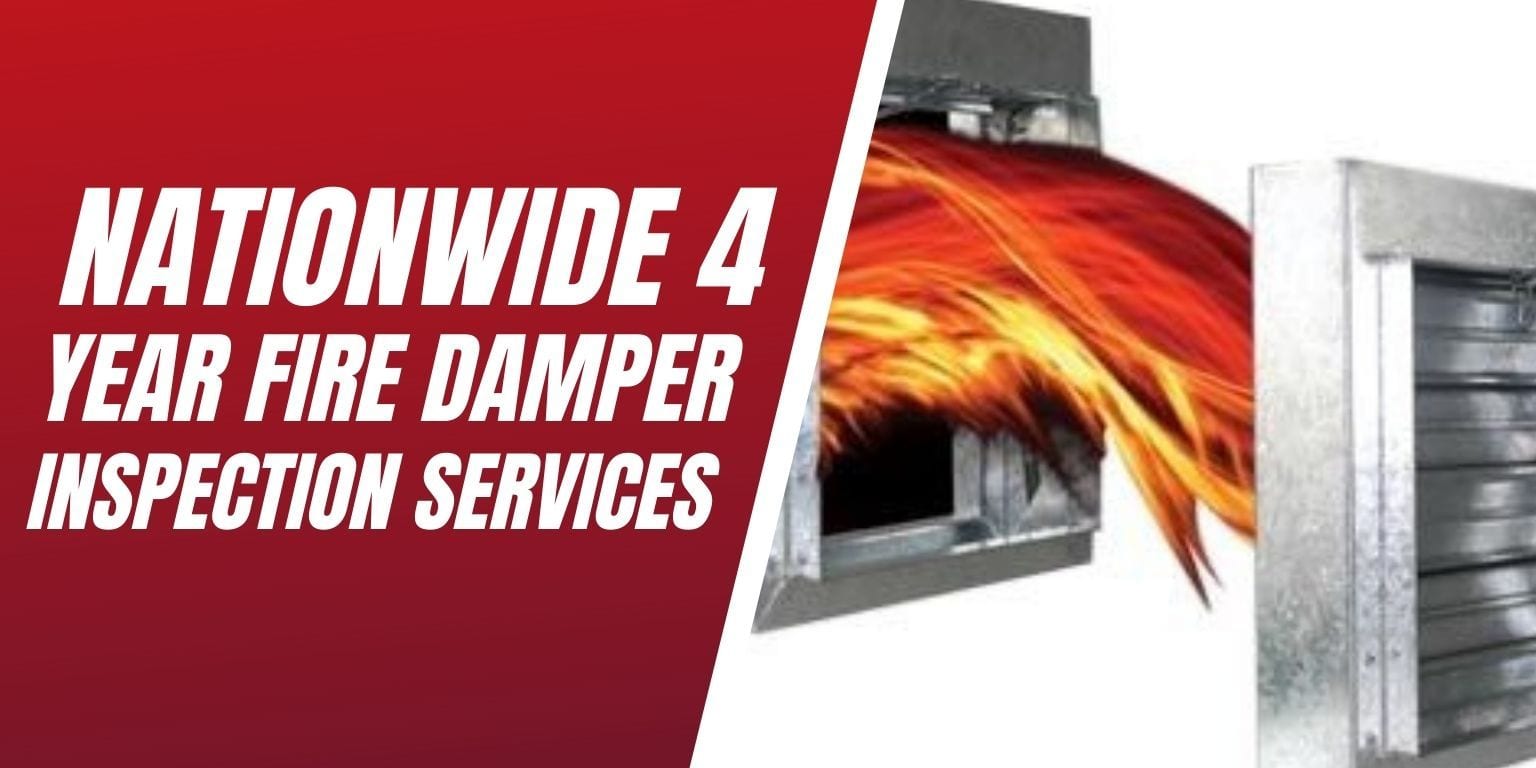
The holidays have officially started and the New Year is less than a month away. December is one of the busiest times of the year for many people, with all the shopping for family and loved ones. One of my favorite parts about the holidays are all the bright lights and decorations. But as festive as all the lights and decorations are, there is a higher chance for fires to start during the holidays. As a facility manager, ensuring that your facility’s fire and life safety systems are properly maintained is just one of the many parts of your job. An important part of your building’s fire protection systems are fire dampers. It may not seem like a big deal, but a fire can spread fast, and one of the best ways for a fire to quickly take over the building is through the ventilation system. Since dampers are installed in the ductwork, it’s easy to forget they are there and they may go too long without being inspected. So why are fire damper inspection services so important, especially with other fire protection features put in place?
In general, a fire damper works when the heat from the fire causes the normal temperature of a room to rise to about 165 degrees Fahrenheit. The fusible link attached to the damper would then melt, causing the damper’s door to close. In rooms where the normal temperature of the room is consistently higher, a higher degree fusible link would be attached to the damper. These particular fusible links would melt at a temperature about 212 Fahrenheit. There are two types of fire damper designs used to help prevent the spread of flames, a dynamic fire damper and a static fire damper.
Dynamic Fire Dampers
These types of fire dampers are located in vertical barriers, where the HVAC system fan will stay on in the event of a fire. Because they are installed in vertical barriers, these particular fire dampers have a spring loaded design. The spring loaded design is where the doors of the damper have a spring like action when they are forced to shut. Since the HVAC system fan will remain on, the air pressure from the fan will help the doors of the damper to spring shut.
Static Fire Dampers
These types of fire dampers are located in barriers where the HVAC system fan will shut off in the event of a fire. These particular fire dampers would be installed in horizontal barriers, and would have a curtain like design. Since the HVAC system fan will turn off, there would be no air pressure and the door of the damper will fall due to gravity.
According to inspections that Life Safety Services® preforms, approximately 22% of dampers fail their inspection. Out of facilities that are not regularly inspected, 35% of dampers fail there inspection. The most common reasons for failures of fire and smoke dampers include:
- Screw in track
- Linkage out of alignment or broken
- Bound in tracks (racking)
- Damper rusted
- Damper propped open
Fire damper inspection services are an important part of a building’s over all fire and life safety protection systems. They are designed to help contain and prevent the spread of fire throughout the ventilation system of a building. It only takes about 30 seconds for a small flame to grow and become a major fire. By cutting off the passageways for flames to travel, the fire will be contained to one specific location. And understanding how a fire damper works can help you have a better understand of why inspecting and repairing fire dampers are so strictly enforced. According to NFPA, “dampers should be tested and inspected every four years in non-healthcare facilities, and every six years in healthcare facilities”. With the holidays on their merry way, making sure that your facility is fire prepared is essential.

